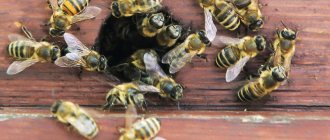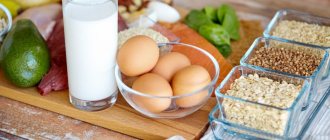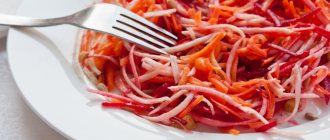Everyone knows that eating mushrooms for gastritis is not recommended.
But in the fall, during the “silent hunting” season, it’s so difficult to resist going into the forest, and then resist the enchanting aromas wafting from the kitchen! Having chronic gastritis in your arsenal, you can only pick mushrooms, unfortunately. Let's look at the background of this statement.
Let's talk about the benefits
The conversation will only focus on edible representatives of forest delicacies. Nutritionists know that for some diseases, the consumption of mushrooms is not only not prohibited, but is also recommended. We present the beneficial properties of the most popular and well-known forest representatives of the mushroom world.
Chanterelles
Extraordinarily beautiful mushrooms.
Moreover, the beneficial advantages of the product prevail over their harmful qualities. Chanterelles have anthelmintic and antibacterial properties; it is not for nothing that they are popularly called an antibiotic mushroom . Thanks to a special component, quinomannose, chanterelles are fatal to all types of parasites and their larvae.
That is why there are simply no worm-eaten chanterelles in nature. The mushroom contains about 20 types of amino acids necessary for the body, it also contains microelements (zinc and copper, manganese, selenium) and vitamins - A, PP, D2, B1, B2 . Another important advantage of chanterelles is that they do not accumulate radionuclides, but remove them from the body. The calorie content of 100 grams of chanterelles is only 19 kcal.
White
Kings among their own kind, the most popular and delicious mushrooms. Boletus mushrooms are primarily beneficial for heart patients due to their high content of nicotinic acid (vitamin PP) and potassium, which have a beneficial effect on the blood supply to the heart muscle. 22 amino acids, phosphorus, copper, vitamins C, B, A make boletus a healthy food. Calorie content – 34 Kcal per 100 grams.
Boletus
Like all other forest brethren, boletus contains a huge amount of protein. Vitamins A and E, C and group B provide valuable antioxidant properties. There are also enough microelements in boletus - they include iron, manganese, potassium, and zinc. The calorie content is low - only 22 Kcal per 100 grams of product. Boletus is recommended for iron deficiency anemia, reduced immunity, and infectious diseases.
Butter
The calorie content of butter is the same as that of chanterelles - 19 Kcal per 100 grams. Amino acids, vitamins, and microelements are contained in boletus in smaller quantities than in boletus and boletus, but they contain more lecithin, a substance that can prevent the formation of cholesterol plaques.
From the store shelf: champignons and oyster mushrooms
There is no need to go into the forest for oyster mushrooms and champignons.
They can be purchased at the supermarket. It is much easier to prepare dishes from oyster mushrooms and champignons than from wild mushrooms. Of course, the aroma is inferior to the forest one, but still. Champignons strengthen the heart muscle, reduce cholesterol levels, and remove radionuclides from the body.
Oyster mushrooms are also grown artificially - so there is no need to be afraid that with mushrooms you will get a fair share of carcinogens. Amino acids and proteins, vitamins and microelements are invariably present in oyster mushrooms, helping to cope with diseases of the heart and blood vessels. Oyster mushrooms normalize metabolism, fight parasites, enhance lactation, and relieve skin problems.
All these properties of mushrooms are attractive, why are they not allowed to be used for gastritis? Let's figure it out.
Mikhail Vishnevsky, biologist, naturalist, popularizer of science and famous mycologist
Mushrooms are a finely balanced low-calorie product. They contain a harmonious ratio of proteins, carbohydrates, fats, amino acids, physiologically essential vitamins and microelements. Mushrooms also contain bioactive substances, including those with medicinal, immunomodulatory and antioxidant effects.
- 100-200 g of mushrooms are enough to ensure the daily protein balance for a person weighing 70 kg. But, of course, mushrooms should not be the only source of protein.
- The proteins of most cultivated mushrooms contain all 18 amino acids included in a balanced nutrition formula. Of these, the essential ones are of particular value: lysine, threonine, valine, tryptophan, tyrosine and others. It is important that mushroom proteins are rich in lysine and leucine, which are so little in cereal proteins, and by supplementing plant foods with mushrooms, we increase its overall biological value.
- Mushrooms have been proven to reduce sugar cravings. Mushrooms, like seafood, are a rich source of zinc. And its deficiency provokes a passion for sweets and alcohol. Zinc is also important for maintaining potency. Important! Mushrooms and seafood do not replace, but complement each other, since both the active substances and their mechanisms of action are completely different. The champions in zinc content are morels.
- Champignons, oyster mushrooms, as well as some wild mushrooms, for example, ram mushroom, are recommended for metabolic disorders and obesity. They contain substances that reduce the level of bad cholesterol in the blood. If oyster mushrooms make up at least 1% of your diet, you have a chance to reduce your bad cholesterol levels by 10%.
Who should not eat mushrooms?
To whom and under what circumstances can edible mushrooms collected in environmentally friendly places and prepared correctly be harmful? For people with an individual reaction to their components, primarily to lectins, and there are many of them now. Anyone who has any problems with the gastrointestinal tract, including chronic kidney and liver diseases. For those who can eat them for many days in a row, several times a day. Well, for people who do not comply with processing and procurement technology.
Under what conditions should you not eat certain types of mushrooms?
Mushrooms are a traditional snack for alcohol. But not all. Poisoning from edible mushrooms washed down with alcohol is called “coprine syndrome”, named after the amino acid coprine. It was first discovered in edible dung mushrooms. If you eat them separately from alcohol, everything is fine, but in combination with alcohol, intoxication occurs. By the way, the “anti-alcohol” properties of these mushrooms have been known since ancient times and were sometimes used by wives against drunken spouses.
Under the influence of coprine, a rapid excessive accumulation of toxic acetaldehyde occurs in the body, which has a toxic effect on the autonomic nervous system. It causes redness and blueness of the skin, the release of all fluids, nausea, arrhythmia, fear of death and other troubles. This does not pose a serious threat to health, but has a powerful learning effect: as a result, a conditioned reflex reaction of disgust to the taste and smell of ethanol is developed. Therefore, on the basis of coprine, its synthetic analogs have been created, which are widely used for the production of drugs for the so-called “coding” for alcohol dependence.
Continuing the topic, read more on gastronom.ru: How mushrooms were eaten in Rus' and in pre-revolutionary Russia, how they were prepared and falsified
How to prepare mushrooms for better absorption
Mushrooms must be chopped before cooking! Why? Humanity has been consuming mushrooms en masse for only a few thousand years, and we simply have not developed enzymes that can break down the chitinous cell wall of mushrooms. Our chitinase enzyme is not a digestive enzyme, but a signal enzyme. It is produced as a marker for worm invasion and is not able to break down fungal chitin. Symbiont bacteria that make up the intestinal microflora also cannot work with chitin. Therefore, the only way to make the nutrients and medicinal substances of mushrooms available to our enzymes and bacteria is to disrupt (destroy) the chitinous cell walls as much as possible. Some destruction occurs when mushrooms are cut and chewed, but this is usually not enough for them to be fully digested. As a rule, we eat ballast product that passes through us in transit. And in this situation, our nutritionists are absolutely right.
The ideal grinding method is achieved using a blender or kitchen machine. Mushroom powder, mushroom extracts and extracts, mushroom caviar, the use of mushrooms as minced meat and finely chopped fillings, mushroom broths and sauces, puree soups and cream soups are the best that can be offered for health benefits.
We should not forget about mushroom mucus. It coats the walls of the stomach and facilitates the digestion of any food. The largest amount of mushroom mucus is formed during cooking, stewing and hot salting.
Frozen mushrooms are also useful. Indeed, during freezing, intracellular moisture crystallizes, and the resulting growing crystals rupture the cell membranes, allowing the entire contents of the cell to escape after thawing. Only in this case, do not use shock freezing, since with it intracellular ice crystals do not have time to form - the cells remain intact.
How long does it take to digest in the stomach?
The mucous membrane of the stomach is inflamed during gastritis. Therefore, you should not load her with heavy food. For gastritis, only foods and dishes of food groups 1–2 are consumed, the digestion of which does not take much time. Any mushrooms, including artificially grown ones, belong to food group 3, which is considered “heavy” to digest . To break down the coarse fibers of the product, the stomach requires a large amount of hydrochloric acid, which it begins to intensively produce.
Along with the digestion of “heavy” food, hydrochloric acid invariably affects the mucous membrane, which is already inflamed. The irritating effect of HCL does not pass without a trace: gastritis either worsens or transforms into an erosive form, which is a precursor to peptic ulcers and oncology.
Interesting! Scientists compare the protein of mushrooms (chitin) with proteins found in the shells of beetles. 4 to 6 hours digesting mushroom dishes .
Signs of mushroom poisoning
Symptoms of intoxication and the length of the incubation period depend on what mushrooms the person ate. Also, the severity of poisoning is affected by how many mushrooms enter the body. The activity of symptoms is influenced by age, body weight and other related factors. As a rule, the first signs begin to appear after 30 minutes. In some cases, symptoms appear within 24 hours.
The toxic effects of mushroom poisons are aimed at the gastrointestinal tract, central nervous system, cardiovascular system, as well as the liver and kidneys. Experts distinguish four types of poisoning:
- The most dangerous type of intoxication is caused by toadstools. The first symptoms appear after 8–18 hours. The speed at which symptoms appear is determined by how many fungi enter the gastrointestinal tract. In case of poisoning, headache, dizziness, and blurred vision occur. At the same time, uncontrollable vomiting, diarrhea, and abdominal pain begin. After some time, dehydration occurs - thirst, general weakness, cramps of the lower extremities, decreased diuresis up to the complete cessation of urination. On the second day, a coma develops, which is characterized by dilated pupils, a drop in blood pressure, and yellowing of the sclera. Then - kidney and liver failure, which leads to death.
- The second type is fly agaric poisoning. The clinical picture appears half an hour after consumption. Diarrhea, vomiting, profuse sweating, confusion, and hallucinations occur. Delirium, attacks of fear and fits of rage are often noted. The poisoned person feels thirsty, and his general condition is similar to intoxication. At the same time, he may feel sleepy. Full recovery occurs in two or three days. Mortality from intoxication in such cases occurs in 3% of cases.
- The third type is stitch poisoning. These mushrooms contain toxic substances that have neurotropic properties. Primary symptoms occur within 6–10 hours. Nausea leading to vomiting, loose stools, and severe headache are noted. Signs of central nervous system damage often appear - dilated pupils, delirium, convulsions. The liver becomes enlarged, and pain occurs when pressing on the abdomen. The poisoned person gradually develops anemia, the urine becomes red-brown in color. The prognosis is uncertain, since symptoms can be severe.
- The fourth type is poisoning with russula, false honey mushrooms, pig mushrooms and other mushrooms with a burning milky juice. Symptoms develop after several hours (1–6). Poisoning is expressed in weakness, vomiting, diarrhea. Severe gastrointestinal upset continues for two days, after which recovery occurs.
In almost every case, especially if a person has eaten a large amount of mushrooms, toxic damage to the liver, spleen and kidneys develops.
In case of mushroom poisoning, you cannot do without the help of doctors.
If you really want to, then you can’t!
If you have gastritis, you should not eat mushrooms.
Under no circumstances. And nothing can replace them either - there is no alternative. The exception is chronic gastritis in the stage of stable remission. In this case, a person can afford mushroom broth without mushrooms once or twice a year. It is important that the mushrooms themselves do not get into the stomach.
Let's consider using white béchamel sauce prepared with mushroom broth. Of course, to prepare the broth it is better to use champignons or oyster mushrooms.
Important! Before consuming mushroom broth or sauce, you must take an enzyme preparation - Mezim, Festal , which will help a sore stomach cope with heavy food.
With increased acidity
With gastritis with high secretion of hydrochloric acid, food must be treated with particular care - so that the gastric mucosa does not suffer, a gentle diet of easily digestible foods is recommended. This does not include mushrooms, including mushroom broths. The frequency of meals is also important - a person should not allow the stomach to be empty, because in the absence of “material for digestion”, a high content of HCL will irritate the mucous membrane. Among patients, there was even an expression - “the stomach eats itself” , which describes this situation.
With hyperacid gastritis, which is what the disease with high acidity of gastric juice is called, food should be of a soft consistency, at room temperature. Smoked meats, spices, fried foods, and bone broths are prohibited. You will have to say goodbye to coffee and strong tea, as well as alcoholic drinks and smoking.
Tea and milk - not forest, but medicinal?
Let's talk about other mushrooms that have nothing to do with the forest.
Let's figure out whether it is possible to drink the widely advertised tea and milk mushrooms for gastritis. If you believe popular recommendations, these products cure many gastrointestinal diseases. And of high quality, forever. We are supporters of traditional medicine, so we do not entirely trust advertising claims.
Let's analyze what is contained in the finished drinks and find out whether these substances are useful for gastritis.
- Milk mushroom. This fungus is produced by bacteria of the genus Zoogloea. Moreover, more than 20 species of bacteria take part in the formation of the fungus! The nutrient medium is milk, it is in it that bacteria begin to “work” - break down lactose and turn milk into a drink somewhat reminiscent of kefir. There are countless benefits in such kefir - it has bacteriostatic properties, contains vitamins and minerals, and normalizes the intestinal flora. For problems with stool, for dysbacteriosis, the product is very, very recommended. But with gastritis, we would be careful. There is lactic acid in the composition, as well as other fermentation products. Therefore, irritant properties cannot be excluded. Synonyms for the name are kefir, Tibetan mushroom. However, in Tibet they do not use the medicine because they have not heard of it at all.
- Tea mushroom. In order for it to form, acetic acid and yeast bacteria must interact. The nutrient medium is freshly brewed sweet tea. Ready-made tea kvass contains acid and even a small percentage of alcohol. Therefore, the drink is not indicated for patients with gastritis, again, due to its irritating properties. Synonyms for the name are kombucha, Chinese, Manchurian mushroom, medusomycete, sea kvass.
- It is believed that tea mushroom can grow in the stomach. We deny: this will never happen, because gastric juice is not a nutrient medium. And you won’t eat the mushroom in its natural form. And kvass obtained from tea jellyfish is a ready-made, processed product that is not capable of growth.
The conclusion is simple - let's leave healthy drinks to people who do not suffer from gastritis. We recommend that gastroenterologist patients drink tea and milk without adding mushroom ingredients.
Study: how fungi in the intestines affect our health
A study conducted by scientists from the University of Utah Health (USA) shows that fungus, another microorganism that lives in our intestines, along with bacteria, is more important for the health of our body and can influence the development of diseases, the press service of the University reports Utah State Health. The results of the study were published in the journal Nature.
Fungi thrive in healthy guts, but they can also cause intestinal damage and further lead to inflammatory bowel disease (IBD), according to new work. Experiments in mice show that the immune system typically controls fungi by targeting the microorganism when it enters a state that can cause harm to the body. When the system is out of balance, disease is more likely to develop.
The study authors noted that a common medical test for diagnosing Crohn's disease, a type of IBD, targets antibodies specifically against fungi. To dig deeper, the team looked for the trigger of the immune response. Working with patient samples and conducting tests on mice, they determined that the yeast Candida albicans, one of the main types of fungi found in the human gut, caused a powerful immune response. Further research showed that the antibodies focused on elongated types of fungal cells called hyphae, specifically binding to adhesin proteins that help microbes stick to surfaces and become invasive.
By figuring this out, researchers could more accurately examine the role of mushrooms in gut health. They found that mice that had the yeast inside them in their normal, rounded state remained healthy. In contrast, mice infected with Candida in its invasive form caused intestinal damage reminiscent of IBD. The results show that normal antibody responses in the gut suppress disease by recognizing the harmful hyphal form of the fungi.
IBD is not the only disease associated with fungi. Another is vaginal yeast infections. Researchers determined that the vaccine, which is being studied as a treatment for yeast infection, caused an immune response against adhesin proteins similar to the response in patients with Crohn's disease. When inoculated with the vaccine, mice typically predisposed to an IBD-like condition were less likely to develop the disease.
Researchers are now studying whether vaccines can help reduce IBD in people—and whether the same approach can be applied more broadly to shaping other microbial communities in the gut.
In addition to the fact that fungi can cause disease, research has shown that they may be important for gut health. Typically, the immune system's job is to get rid of infections by getting rid of invasive organisms. In this case, the fungi benefit from interaction with the antibodies. The immune response transforms the mushrooms from an invasive state to a round, budding state, which improves their survival in the intestines. This way, the immune system limits Candida to its least pathogenic form.
The study's findings open up new opportunities for developing therapeutics that could improve gut health.
[Photo: VADER 1941]
If you can't resist and your stomach hurts
It is difficult to follow a therapeutic diet until its violation provokes a painful attack.
The feeling is not pleasant and requires medical attention and the correct actions of the patient. However, such an attack is a motivation for following the nutritional rules for gastritis. After the pain is relieved, a person no longer has the desire to eat heavy food.
So, if you couldn’t resist eating mushrooms and are experiencing stomach pain, you need to:
- First of all, consult a doctor. Even if you are absolutely sure that the mushrooms were of high quality and cooked correctly, it is not worth the risk. It is not always possible to cope with exacerbation of the pain syndrome at home, and the patient is hospitalized.
- Rinse the stomach.
- To relieve pain and heartburn, you can take an antacid - Almagel, Hefal. The doctor will prescribe further drug treatment.
- Drink more warm non-carbonated liquid - green tea, water.
- Follow a strict diet - eat little and often. Use only approved products.
Mechanism of occurrence
There are many varieties of mushrooms. Some of them are edible, for example, boletus, boletus, champignons, oyster mushrooms and others. Conditionally edible mushrooms are those that require pre-processing. Drying, frying, salting, pickling and other manipulations help remove harmful substances from them. If conditionally edible mushrooms are processed incorrectly, they can also cause poisoning.
Inedible mushrooms include: toadstool, fly agaric, pepper mushroom, etc. Poisonous mushrooms produce toxins that have a poisonous effect. For example, toadstools contain mycotoxins that disrupt fat metabolism, affecting the nervous system and immunity. These poisons are carcinogenic. They are not removed during heat treatment or salting. Accidental ingestion of particles of such fungi into the body causes severe intoxication and even death.
Inedible mushrooms.
Useful video
Watch a video about the benefits of mushrooms from a nutrition expert:
They dealt with mushrooms for gastritis and put a ban on them. But don’t assume that your illness is impoverishing your diet. If desired, even dietary products can be prepared in a tasty and varied way. Use a double boiler, bake, simmer, simmer. Be creative when cooking and learn new recipes.
Take your family as your allies - gradually healthy eating will become a habit. You will forget about exacerbations of gastritis and solve many additional problems - get rid of excess weight, high blood pressure, depression and fatigue. You can live without mushrooms, but if you have gastritis, it is necessary.











